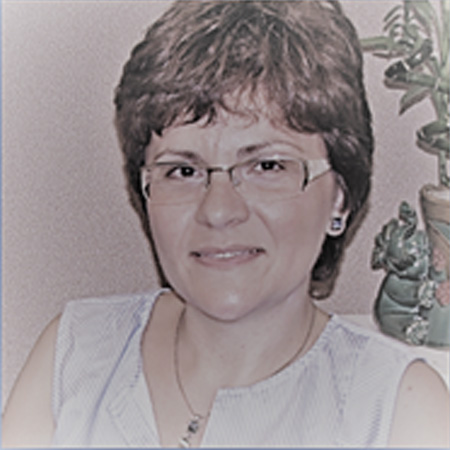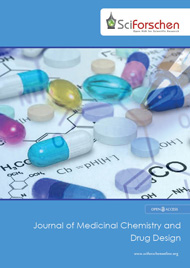
Associate Professor
Department of Chemistry,
William Paterson University,
300 Pompton Road, Wayne, New Jersey, US
Phone: 973-720-2539
E-mail: jitianum@wpunj.edu

Department of Chemistry,
William Paterson University,
300 Pompton Road, Wayne, New Jersey, US
Phone: 973-720-2539
E-mail: jitianum@wpunj.edu
| 6/2002-6/2003 | Postdoctoral appointment, Materials chemistry, Institut Francais du Petrole, France | FRANCE |
2001 |
Ph.D. in Physical Chemistry, University of Bucharest, Romania | ROMANIA |
| 1996 | M.Sc in Inorganic Chemistry, University of Bucharest, Romania | ROMANIA |
| 1995 | B.Sc in Chemistry, University of Bucharest, Romania | ROMANIA |
Dr. Mihaela Jitianu earned her Ph. D degree from University of Bucharest, 2001, for her research in the layered compounds field, thesis entitled: “Layered compounds with a hydrotalcite-like structure and their derived oxidic compounds”. She is currently an Associate Professor in the Department of Chemistry at William Paterson University, Wayne, New Jersey, US. Her expertise is in the inorganic chemistry field, as follows: layered compounds, metal complexes, and materials chemistry, photocatalysis and rheology of suspensions, gels and solids. During her career, Dr. Jitianu synthesized complex compounds with biological applications, carbonic anhydrase inhibitors – study being a part of a larger one and dealing with the influence of the metal ion upon biological activity of complexes. This research resulted in a peer-reviewed publication in European Journal of Medicinal Chemistry.
One of Dr. Jitianu’s current research fields is synthesis and characterization of composite materials with applications as photocatalysts. Photocatalysis has become a field of increasing interest because of its large potential for environment protection since it deals with decomposition of both water and atmospheric pollutants. The composite materials are very good photocatalysts in degradation of vanillin. Vanillin has been broadly used in flavorings, pharmaceuticals, perfumes and fragrances, yet has been found toxic to fish and causes odor in water, and what's more, it inhibits the growth of algae.
Most recently, Dr. Jitianu’s main research is on rheology of materials, more specifically rotational and oscillatory rheometry. Rotational rheometry is a powerful technique for the measurement of complex shear rheology across all material types. It is ideal for discerning structural and compositional changes of materials, therefore material stability and performance.
Dr. Jitianu is a member of the American Chemical Society, adviser in the ACS Student chapter program in the Department of Chemistry at William Paterson University. She has mentored over 30 undergraduate students and 5 graduate students over her career. Students under her supervision have presented their research at ACS meetings, regional and also international symposia. Dr. Jitianu and her research students have published 21 peer-reviewed articles along with over 40 conference presentations, as invited and contributed works.
One of Dr. Jitianu’s main interests nowadays is to promote women in science. She is the program coordinator for Women in Science and Engineering Program – WISE – at William Paterson University. The main goal in this program is to build science women who will take leadership positions, directing the field by continuously work towards expanding the pool of talented women, helping them find appropriate career goals that match their skill set.
Dr. Jitianu’s research challenge has been to comprehend the link between the micro-structure and the rheology of a system. Most systems contain irregularly shaped particles with size distribution, droplets in case of emulsions, or branched or highly entangled long chain polymeric molecules in solutions, or loosely formed aggregates of particles in suspensions. At rest, these structures are oriented arbitrarily corresponding to their minimum energy state. As the level of shearing increases steadily, the structural units may respond to stress by aligning themselves in the direction of flow, or by deforming or by means of decomposition of the aggregates into primary particles.
The micro-structural changes in aggregates depend upon the relative magnitudes of inter-particle forces. In suspensions of fine particles, the van der Waals attraction forces cause the particles to join with each other on touching, this effect being rather significant in colloidal suspensions, leading to coagulation. Our studies on rheology of suspensions made of Titanium dioxide with different levels of residual sulfate have found that the aggregation characteristics of titanium dioxide are strongly dependent on the electrokinetic properties of the powder.
The large class of anionic clays, natural and synthetic layered double hydroxides LDHs is less spread in nature with respect to the cationic clays, but they can be synthesized in a wide range of compositions. The anionic clays, mainly after calcination, have interesting properties that lead to applications in the field of heterogeneous catalysis (hydrogenation, reforming, basic catalysts and as catalyst supports).
TiO2 is an n-type semiconductor and the reactive species in photocatalysis is the hole cogenerated with an electron upon absorption of a photon. Many organic compounds can be decomposed in aqueous solution under irradiation with near ultraviolet light into carbon dioxide and water on the surface of TiO2 particles. Nitrogen doping and also layered double hydroxides, LDHs, are both hypothesized to eliminate the rapid recombination of excited electrons/holes during the photoreaction. Composite materials using a standard commercially available TiO2 and LDH were successfully prepared, characterized and tested against vanillin, a phenol-model compound. The catalytic results confirmed the hypothesis that a synergistic effect between nitrogen doping of TiO2 and the presence of LDH occurs and contributes to a high overall photocatalytic activity.

All Sci Forschen Journals are Open Access